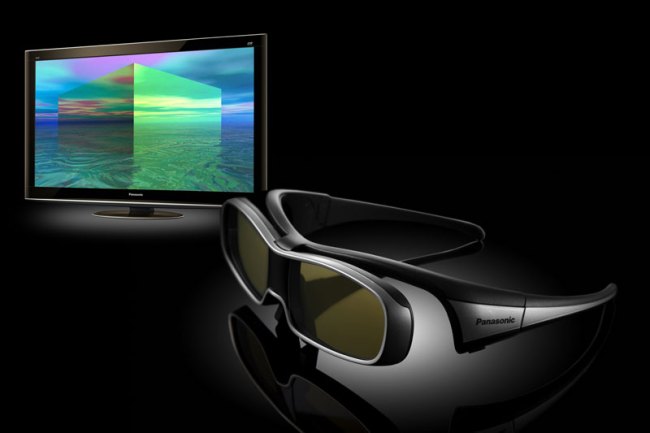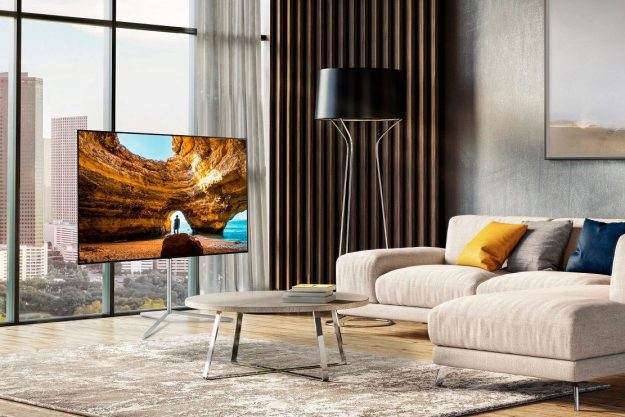
Far be it from us to stay away from the latest juicy new idea in home theater technology, 3D. It’s been all over the news and the blogs for a while, recently culminating with a huge display at CES. Whether or not the technology actually catches on is a discussion for a different day. Today we’re going to talk about the technology behind it.
Today’s Show:
News:
- Gadgets techies can live without
- OPPO Releases New BDP-80 Blu-ray Disc Player
- LED to Surpass CCFL in Large-Area TFT LCD Backlights in 2011
- SRS Labs Touts TruVolume Traction
Other:
The Details Behind 3D TV
Far be it from us to stay away from the latest juicy new idea in home theater technology, 3D. It’s been all over the news and the blogs for a while, recently culminating with a huge display at CES. Whether or not the technology actually catches on is a discussion for a different day. Today we’re going to talk about the technology behind it.
The human eye is an amazing thing. Put two of them working together and things really come into focus (pardon the pun). The truth is that your brain uses the fact that each eye sees the world from a slightly different angle to create depth perception. This whole “two images at once from slightly different angles” concept is the basis behind 3D technology.
There are many different approaches to 3D. We’ll do our best to cover the big 4.
Anaglyphic 3D
Everyone remembers stopping by 7-11 to pick up your red and blue cardboard glasses so you could watch Elvira Mistress of the Dark in 3D. Be honest, you watched it. In the red and blue system, two images are displayed on the screen simultaneously, one in red and the other in blue.
The glasses filter the image so that each eye only sees one of them. Your brain fills in the gaps and creates a 3D image. Viola, Elvira in your living room! This method sacrifices allot of quality in the image because it’s actually using color to create the separation. But the benefit is that any color display can use it to create a 3D experience.
More information on Anaglyphic 3D
Polarized 3D
This is the technology that has become all the rage. Every demo we saw at CES from the major manufactures was a polarized 3D implementation. It comes in two main flavors, active glasses and passive glasses.
Passive Polarized 3D
If you’ve seen a movie in RealD, sometimes simply marketed as Digital 3D, you’ve seen a Passive Polarized 3D movie. In these glasses, the lenses have a reverse polarization, one clockwise and the other counter-clockwise. Alternating frames of the movie also alternate polarization, so that each frame is only seen by one eye. The frames change so quickly your brain can convert them into a 3D image.
This method provides really cheap glasses, but in addition to a new 3D capable projector, it also requires a special screen. The screen must be able to preserve the polarization of the light source. For home viewing on a flat panel, this shouldn’t be an issue. But if you want to build your own 3D front projection theater, you’ll need to keep it in mind.
More info on Polarized 3D (RealD 3D)
Active Polarized 3D
Dolby 3D, and most of the demos we saw at CES, use an active polarized 3D technology. In this version, the glasses do all the work. They work like shutters, opening and closing alternating lenses in sync with the refresh rate of the screen. Of course this requires the screen refresh at least twice as fast as normal (120 Hz) so that each eye gets the full progressive video (60 fps).
The glasses are based on LCD technology and open and close when voltage is applied just like the pixels on an LCD TV. They require power (batteries) and must run in perfect sync with the display. That’s what makes them so darn expensive. And what will probably make them difficult to interchange should you and a friend have 3D TVs from different manufacturers.
More info on Active shutter glasses
Lenticular 3D
This is the technology that many think will need to be perfected before 3D TV will really take off. It doesn’t require any glasses. Instead, the TV itself incorporates a special lens that can send different information to each eye. The obvious problem with current implementations is that you have to be in just the right spot, the sweet spot, to see the 3D effect. Wander anywhere off angle and the 3D either disappears or the screen gets really blurry and distorted.
We’ve seen many demos of Lenticular 3D, none of them at all ready for prime time.

Editors' Recommendations
- Best OLED TV deals: Save on LG C3, Samsung S90C, and more
- Samsung prices its entry-level S85D OLED TV starting at $1,700
- This 40-inch TV is under $150 right now, and it’s selling fast
- This 40-inch smart TV is a no-brainer while it’s discounted to $148
- This massive 77-inch LG OLED TV is $400 off at Best Buy



